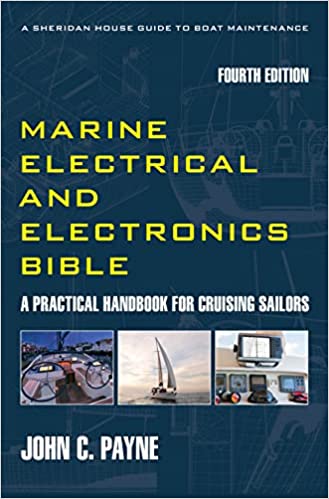Maintaining Anchor Windlasses
Anchor windlasses are by default and necessity are installed in the most harsh and exposed of all boat locations. They have to continually tolerate serious saltwater over it on a frequent basis. Anything you can do to protect anchor windlasses will pay big dividends in terms of limiting failures and problems. I always have a canvas cover made and keep anchor windlasses covered at all times to reduce the effects of weather, so much damage gets done on a passage with water constantly over the bows. You need to make sure that you can really tie down the cover though. Another precaution is to remove and lubricate all bolts on anchor windlasses so you can actually get them off at some future point. Many casings of anchor windlasses are made of aluminum casting and corrosion is very common.
Anchor winch and windlass systems on yachts are prone to a range of common issues, most of which stem from electrical faults, mechanical wear, or poor maintenance. Fortunately, many are preventable with regular inspection and care.
The Marine Electrical Electronics Bible is now out, buy and save money, make your boat more reliable and be self sufficient.Maintaining Anchor Windlasses
Always wash down anchor windlasses in fresh water to reduce corrosion. Where there is an oil sump, check it for correct level, and also check oil for water contamination. I am a bit pedantic and try and change oil every year so its always clean and gives optimum lubrication but that is just me. Where there are grease points on anchor windlasses pump in some grease and expel the old. Do this every 3 months or in accordance with how much use you are giving the anchor windlass. Anchor windlasses that are operated frequently tend to do better than anchor winches that sit idle for months on end.
Try and run the anchor down and up a few times so that the anchor winch motor warms up, as winding's may absorb moisture and this is a good way of drying things out. As well anchor windlass carbon brushes which are spring loaded anyway tend to be freed up and move properly and maintain correct commutator to brush pressures.
Anchor Windlass Electrical Problems
Anchor windlass electrical problems on yachts often stem from corroded connections, faulty solenoids, or worn switches. Common symptoms include intermittent operation, complete failure, or slow motor response. Saltwater exposure accelerates corrosion at terminals and foot switches, while loose wiring or poor grounding can cause voltage drops. Blown fuses or tripped breakers may indicate overload or short circuits.
Undersized wiring can lead to overheating, especially under heavy load. Regular inspection of cables, terminals, and control switches helps prevent failures. Keeping components dry, clean, and well-secured is essential for reliable windlass performance, especially in demanding anchoring conditions.
Dead or intermittent operation is often due to tripped circuit breakers, blown fuses, or corroded solenoid connections. These are among the most common issues and are usually easy to diagnose with a voltmeter.
Faulty foot switches or remotes can fail due to water ingress or internal corrosion. These should be opened and inspected for moisture or loose wiring.
Anchor Windlasses and Mechanical Problems
Mechanical problems in anchor windlasses are common, mainly it is caused by the chain jamming in the gypsy, or a poor angle or offset causing the chain not to lead in properly. Sometimes people just choose to live with these issues but there is always a solution. Bow rollers are also a common problem, and they should be checked for jamming also. More than once has a chain stopper been left engaged and power applied, severely stressing the fitting.
Clutch slippage occurs when the windlass spins but doesn’t move the rode. This is usually due to a loose or worn clutch that needs adjustment or replacement.
Gypsy wear or mismatch can prevent the chain from gripping properly. Using the wrong chain size or a worn gypsy can cause the chain to skip or jam.
Lack of lubrication in gearboxes or bearings can lead to premature wear or seizing. Salt buildup and corrosion, especially in saltwater environments, can affect both electrical and mechanical components. Regular rinsing and protective coatings help mitigate this.
Overloading the windlass by using it to pull the boat toward the anchor (rather than motoring forward) can damage gears and strain the motor. Improper rode handling, such as letting chain pile up under the windlass, can cause jams or motor stalls.
This common problem area in anchor windlasses is where the chain is not coming off the gypsy and falling down the hawse pipe, the chain heaps up and when tension comes off the chain the slack chain also jams. As discussed elsewhere it is important to check that chain falls properly and doesn’t pile up correctly in the chain locker. About anchor windlasses and about anchor handling.
